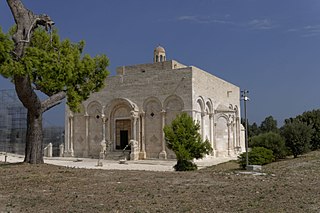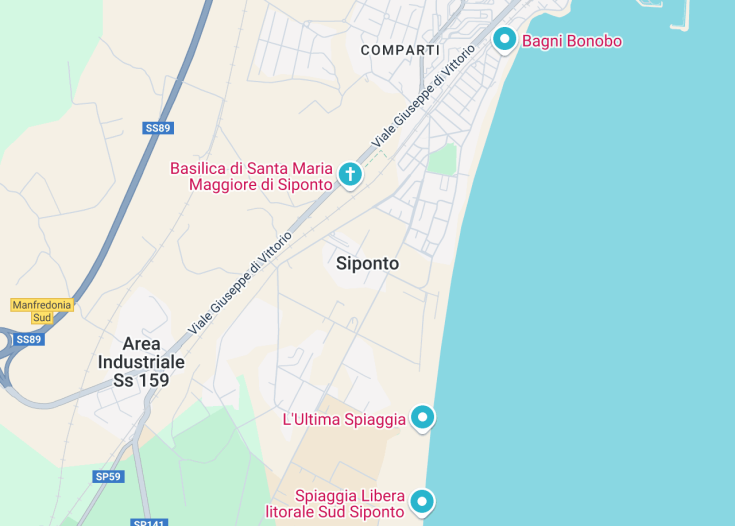Nestled on the southern coast of Italy’s venerable Apulia region, Siponto epitomizes the allure of historical richness blended with natural beauty. This ancient town near modern-day Manfredonia was once a prosperous port of the Roman Empire. Today, visitors can explore fascinating archaeological sites that highlight intricate mosaics and remnants of medieval architecture. The nearby Pineta di Siponto offers a serene natural retreat with its lush pine forests and sandy shores, making Siponto a captivating destination for history enthusiasts and nature lovers alike.
For an immersive experience, plan your visit in early autumn to enjoy mild weather and fewer crowds, enhancing your exploration of Siponto’s historical sites.
Consider hiring a local guide for a detailed tour of the archaeological sites. Their insights will deepen your understanding of Siponto’s rich historical tapestry.
Siponto: A Timeless Gateway to the Past
| Country | Italy |
| Time in Siponto | GMT+1 |
| Language spoken | Italian |
| Population | 4,321 (source: Italy Statistical Office) |
| Currency | Euro (€), EUR |
| Airports |
|
Siponto, Italy, might appear small, but its historical significance is immense. Once an ancient town and port, Siponto offers a rich tapestry of Italy’s past, threaded with tales of conquest and culture. Located in the Italian region of Puglia, this placid town is just a short distance from the bustling streets of modern Foggia yet feels worlds apart with its quiet charm and slower pace of life.
One of the town’s most remarkable features is the Church of Santa Maria Maggiore di Siponto. A fine example of Romanesque architecture, this church was later enhanced by a stunning modern art installation that blends the ancient with the contemporary. Visitors are also drawn to the nearby archaeological park, where the ruins tell the story of a once-thriving Roman settlement.
The resurgence of interest in Siponto is part of a broader trend in which travelers seek out hidden gems across Italy. Unlike more tourist-heavy destinations, Siponto offers a unique opportunity to explore Italy’s ancient landscapes without the crowds. The local cuisine, characterized by its simple yet bold flavors and locally sourced ingredients, is another cornerstone of the genuine Italian experience that Siponto provides.
Enthusiasts of history and culture will find Siponto’s proximity to other historical locales appealing. A drive through the picturesque landscapes of Puglia reveals numerous other sites of historical significance, including the iconic Trulli of Alberobello and the mysterious Castel del Monte, both UNESCO World Heritage sites.
Whether it’s walking through the remnants of its ancient streets or enjoying the tranquil seaside atmosphere, Siponto captivates and offers a deeper understanding of Italy’s complex history and vibrant culture. It’s a destination that truly provides an escape to the past, allowing travelers to step back in time while enjoying the warm, welcoming culture of southern Italy.
Where is Siponto?
Situated on the Adriatic coast in southern Italy, Siponto is accessible via major highways connecting it to cities like Rome and Naples.
Distances:
| Route | Distance by car | Time by car |
|---|---|---|
| Rome to Siponto | 208 miles | Approx. 4 hours |
| Naples to Siponto | 139 miles | Approx. 2.5 hours |
What is Siponto famous for?
Siponto is celebrated for its ancient ruins and the unique blend of its historical layers that reveal Roman and medieval eras, drawing history buffs and archaeologists alike.
History
Prehistory to Roman Era (Before Common Era)
In the shadows of history, the area of Siponto near Manfredonia in Italy resonates with ancient tales. Before the Romans solidified their influence, this area was likely inhabited by Daunians, an Illyrian people who settled in southern Italy. Siponto served as an important Daunian town, which later flourished as a strategic port during the Roman period. The presence of archaeological findings such as defensive walls and remnants of villas provides evidence of its longstanding human activity and its development under Roman influence.
Early Christian and Medieval Period (1st – 14th Century AD)
With the spread of Christianity, Siponto gained religious significance. By the 5th century, it was an established bishopric, marking it as a central ecclesiastical hub in the region. The town saw various sieges and reconstructions due to Byzantine, Lombard, and Norman influences over the centuries. Notably, in 663 AD, Siponto was briefly taken over by the Byzantine Emperor Constans II during his military campaigns. The medieval period saw the construction of the Basilica di Santa Maria Maggiore di Siponto, a quintessential example of Romanesque architecture, signifying the town’s continuing importance through the ages.
Decline and Rediscovery (15th – 20th Century)
The gradual silting of the harbour and shifting trade routes led to Siponto’s economic decline, overshadowed by the rise of nearby Manfredonia, founded by King Manfred in 1256. Siponto’s significance dwindled, leaving it largely as a ghost town, remembered in history and legend. Archaeological interest in the 20th century revived Siponto’s story, uncovering vast ruins that display the town’s historic breadth and the layers of cultural influence over centuries. Modern interventions, such as the sculptural installation by Edoardo Tresoldi in 2016 at the ancient basilica site, have breathed new artistic life into its historical essence, merging old with contemporary narratives.
Visit Siponto
What to see and do in Siponto
Exploring Siponto offers a journey through time. Key attractions include:
- The Archaeological Park of Siponto, where you can walk amidst ancient Roman and medieval ruins.
- The Basilica di Santa Maria Maggiore di Siponto, an exemplary Romanesque church partially restored with a unique contemporary installation by artist Edoardo Tresoldi.
- Beach visits near the park, combining historical tours with relaxing seaside activities.
These sites provide a captivating glimpse into the area’s rich historical tapestry and evolving culture.
Festivals and Events in Siponto
Siponto hosts several events that celebrate its historical and cultural heritage, particularly noticeable during the summer months. Highlights include medieval reenactments and local food festivals, offering visitors a taste of the region’s rich traditions and gastronomy.
Best time to visit Siponto
The ideal time to visit Siponto is from late spring to early autumn, encompassing May through September. This period offers pleasant weather suitable for both exploring the archaeological sites and enjoying the nearby beaches.
Is Siponto worth visiting?
Siponto presents a unique blend of historical intrigue and natural beauty, making it a noteworthy destination for those interested in Italy’s ancient past and Adriatic coastlines. While it may not boast the wide-ranging amenities of larger tourist spots, its quieter, more reflective environment offers a deeper connection to Italy’s historical roots. The main challenge may include limited facilities, but for history enthusiasts and those seeking a tranquil escape, Siponto promises a rewarding experience. Visitors need to be prepared for a more subdued visit compared to more commercialized locales.









